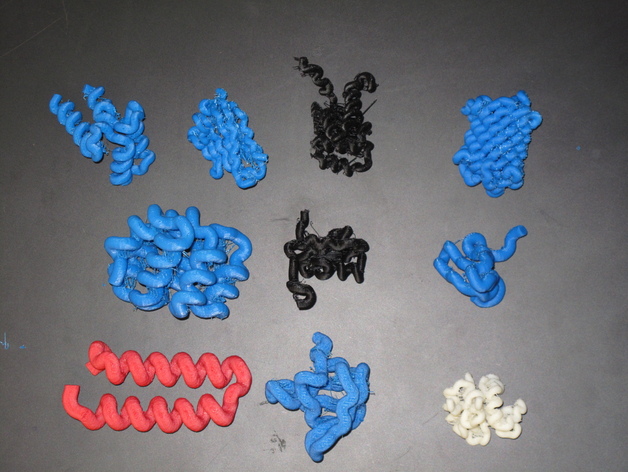
Protein domains
thingiverse
Proteins are made up of amino acids that fold into unique three-dimensional structures, giving each protein a specific set of functions. For instance, if a protein contains death and EF hand domains, it may trigger cell death in response to an increase in cellular calcium levels. In biochemistry classes, 3D printed models are used along with software like PyMol on iPads for teaching protein structure and function. There are over forty different types of protein domains, and their three-dimensional structures are determined through X-ray crystallography or nuclear magnetic resonance (NMR). PDB files containing the atomic coordinates of each domain can be found on PDB.org and converted to STL files using VMD software for 3D printing purposes. Examples of various protein domains include SH2, SH3, CARD, death, EF hand, beta barrel (cyan fluorescent protein), ring, WW, helix-turn-helix, and Ig domains, each with its unique function and structure. To convert PDB files to STL for printing, follow the steps of selecting a structure from pdb.org, opening VMD software, loading the PDB file, adjusting display settings, rendering the file as an STL format, scaling the model in Replicator G, and uploading it to cloud.nettfabb.com for fixing before slicing and printing.
With this file you will be able to print Protein domains with your 3D printer. Click on the button and save the file on your computer to work, edit or customize your design. You can also find more 3D designs for printers on Protein domains.
